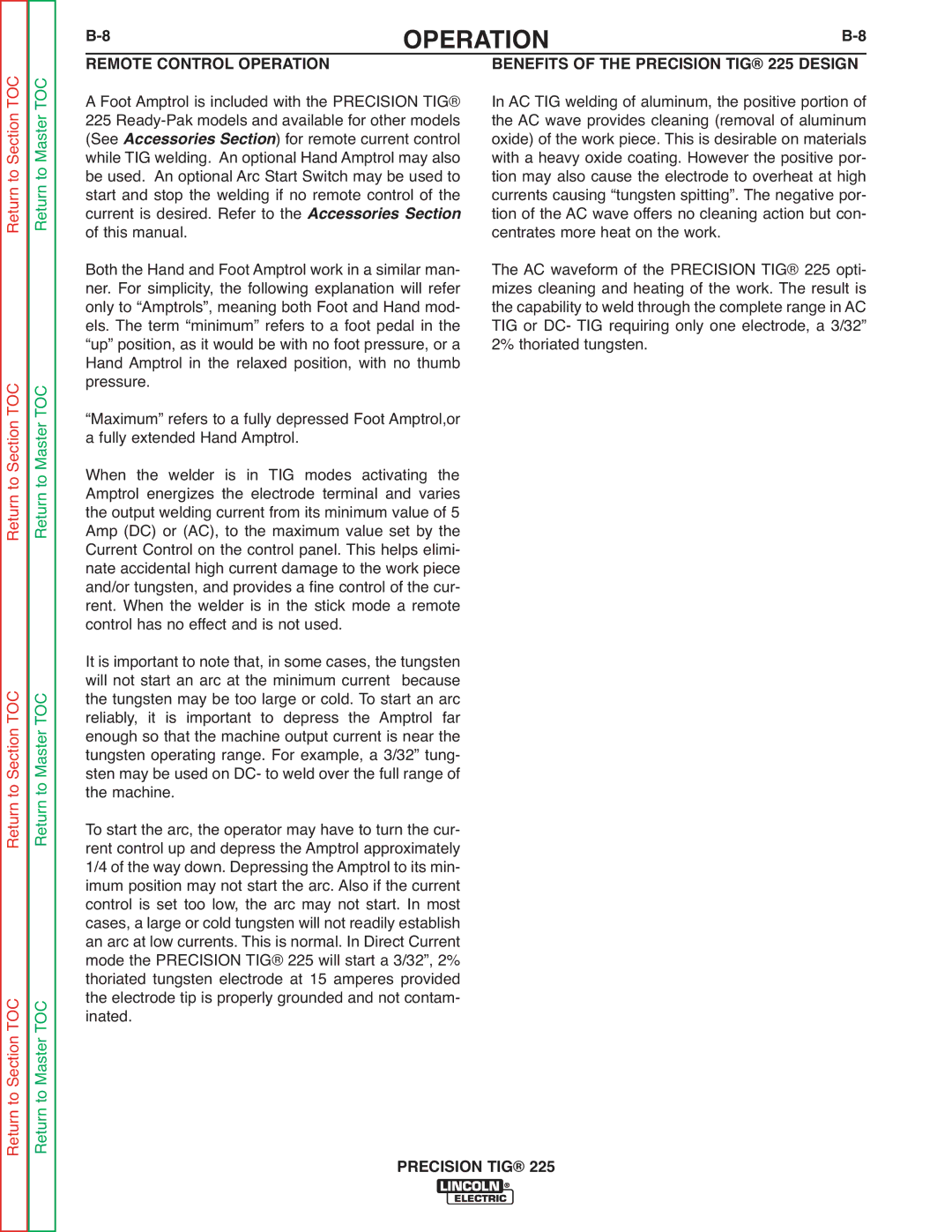SVM186-A specifications
The Lincoln Electric SVM186-A is a versatile and highly efficient welding machine that stands out in the competitive landscape of industrial welding equipment. Designed to meet the needs of both professionals and hobbyists, this machine combines advanced technology with robust construction, delivering outstanding performance in various welding applications.One of the standout features of the SVM186-A is its multi-process capability. This welding machine can handle MIG, TIG, and Stick welding processes, making it suitable for a diverse range of projects, from light fabrication to heavy-duty work. This flexibility reduces the need for multiple machines, saving time and space for users who require versatility in their welding operations.
The SVM186-A is powered by a reliable and durable inverter technology, which ensures a stable arc and efficient operation across different materials, including stainless steel, aluminum, and mild steel. This inverter technology not only enhances performance but also reduces energy consumption, making it an environmentally friendly choice.
Another notable characteristic of the SVM186-A is its user-friendly interface. The digital display provides real-time information on voltage and wire feed speed, allowing welders to easily adjust settings for optimal results. This intuitive control panel design makes it accessible for both novice welders and seasoned professionals who value precision.
The machine is also built with safety features in mind. It comes equipped with overcurrent protection and thermal overload protection to prevent damage during operation. This ensures that users can work confidently, knowing that the equipment is designed to handle demanding tasks while prioritizing safety.
Portability is another advantage of the SVM186-A. Weighing in at a relatively light weight compared to other industrial welders, this machine is designed for ease of transport. Whether working on-site or in a workshop, welders can easily move the equipment as needed.
In summary, the Lincoln Electric SVM186-A is a sophisticated welding machine that merges technology and practicality. Its multi-process capability, inverter technology, user-friendly interface, safety features, and portability make it a top choice for those seeking dependable and efficient welding solutions. Whether for professional fabrication or personal projects, the SVM186-A is equipped to handle the demands of modern welding tasks with exceptional ease and effectiveness.

